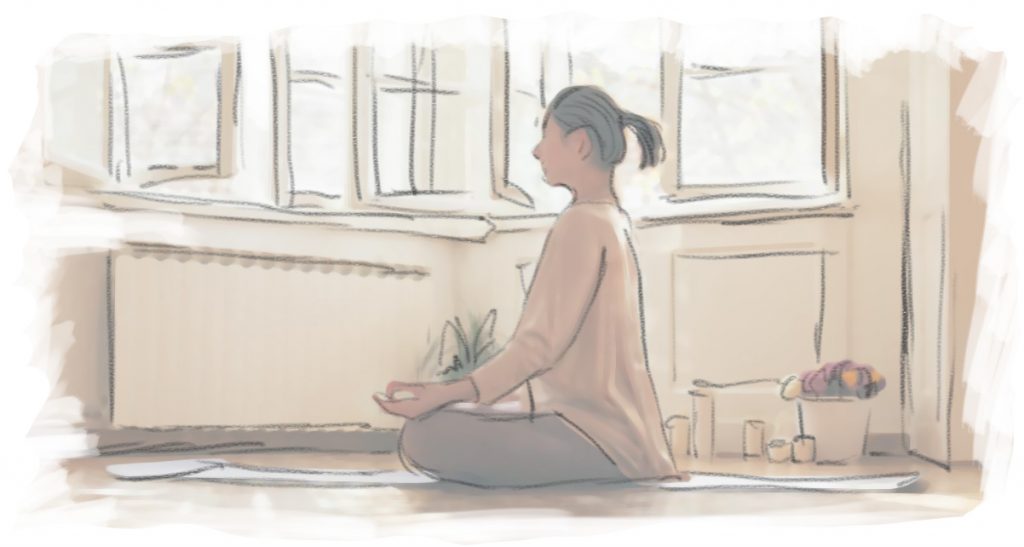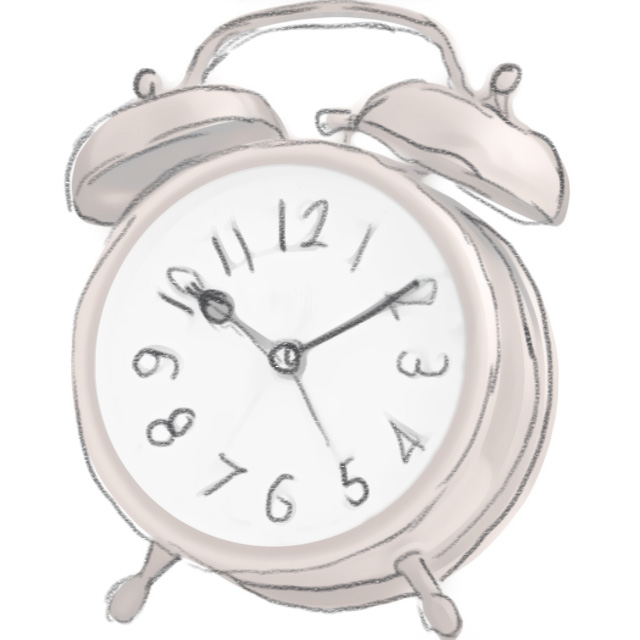In the previous section, we learned how the body’s senses interpret the world around us and tell our mind when something changed. A change in sound. A change in light. A change in touch. And whichever sense is shouting the loudest will get the minds attention.
So in order to give yourself the best chance of having a wonderful meditation, we need to eliminate as many sensory distractions as possible.
So lets start with the environment. Where to meditate.

Setting up your environment
Where you choose to meditate is important. When you get more experienced, you could meditate sitting at the side of a busy highway, but when you first start out, it’s a good idea to choose a location that is naturally quiet and free from sudden noises. It doesn’t have to be completely silent, but avoid sudden noises. They can be quite jarring if you’re very deep into your meditation.
Tell people you’re about to meditate to avoid being interrupted. Choose a room away from other people and hang a sign on the door if needed.
Wear loose clothing. If clothing is too tight. As your other senses fall away, the tightness will become the thing that shouts the loudest. As you breathe you’ll feel the material rubbing too.
Choose somewhere that is a comfortable temperature. Preferably cool. Most people get warmer while meditating due to the improved blood flow, so starting a little cool is a good idea.

Dim lighting is good. It has naturally calming properties as your body associates it with periods of rest.
Choose an area with no visual movement. Some people meditate with their eyes open, in which case, anything moving in their field of vision has the potential to grab their attention. Even with your eyes closed, you can still detect changes in light through the eyelids.
No electronics – goes without saying. But ditch the blinking lights, the loud hums and the alert notifications.
Your phone is what got you into this mess in the first place, so leave it outside the room.
Bossy Hermit
Using the same place each time, will help your body settle much faster each time. Whenever you sit down, your body will instantly go, “oh we’re here again, I guess it’s time to shut things down for a while”.
Don’t meditate if your stomach is growling, but also, don’t eat a big meal just before you meditate. Digesting food takes a lot of energy and will distract you.

When to meditate?
Traditionally, meditation was practiced twice a day. Starting with yoga before dawn, then meditation at sunrise to make use of the suns energy. Then again in the evening. It’s still a good practice, even today.
Whatever time you decide and however many times a day you choose, you should try to keep it consistent.
Just like using the same place each time, doing it at the same time each day also reinforces the activity and builds a sort of muscle memory.
I don’t do yoga, but I do meditate first thing before doing anything else. My evening meditation time varies a little, but it should be a while after you’ve eaten so your stomach doesn’t distract you. And not too close to bed time, otherwise there’s a tendency to face plant if you’re not careful.

How long?
The U.S. Army have done studies and found that 12 minutes gives the biggest bang for the buck. Just like an Olympic runner might train for 40 hours a week to be the top athlete, most people can see tremendous health benefits from a 20 minute jog 3 or 4 times a week.
Meditation is the same. Even one minute of meditation is better than none. 20 minutes is the number that I see mentioned the most. You can sit for hours or even days if you shave your head and wear some robes.
If you can’t manage 20 minutes because of your busy lifestyle, then you should probably aim for an hour……….bdum tssshhhhhh.
Actually, one thing that many people find is that meditation is quite restorative and after a while they tend to need less sleep. Plus, if you’re an insomniac, then meditation will soon put a stop to that.
So 20 minutes, twice a day might sound like a lot, but you’ll be more focused and efficient with work. Sleep better and have more energy. If 20 minutes seems like a long time, start with 5 or 10 and gradually increase it or decrease it depending how you feel.
Meditation is gentle, not forceful. You’re going with the flow, not trying to divert the raging rapids.
Drifting Hermit
You can also do a mini meditation for just 30-60 seconds. Each time you jump in your car to do battle with the other road warriors, or just before jumping on a conference call. Just sit and find the inner stillness. You’ll enjoy the commute a whole lot more.
For the meditation junkies, the popular buzzword these days is mindfulness.
It’s essentially being completely present in everything you do, to the point where your mind no longer keeps jumping in to interrupt you. It stops the future problem solving but it doesn’t prevent your mind alerting you to urgent bodily senses.
Sounds scary, the thought of having no-mind, but it’s incredibly liberating when you realize how much time we spend in our heads and missing out on what’s happening right now.
I’ll cover a lot more on mindfulness in my blog posts. So don’t forget to sign up for my newsletter.

A lot of people recommend setting a timer. But for me at least, setting a timer led to more frustration. Either I would just be getting into something good when the timer would interrupt (terrify) me, or I would spend my time anticipating the timer going off instead of meditating.
So, for me it didn’t work.
Time does some weird things during meditation. Sometimes, you feel like you’ve been sitting there for hours only to find it’s been just a few minutes or vice versa.
So I found that just letting the meditation end naturally when I came back to the “now” was the best for me.
Not getting the environment right is what trips up many meditators before they get started.
Stumbling Hermit
So hopefully you found a naturally calm place in your home away from sudden noises. No interruptions from family. Not too hot. No strong smells. No tight clothing. Basically nothing that will tug on any of your senses and keep bringing you back to the physical world.
Give yourself a fighting chance and don’t give your mind an excuse to interrupt you.
Meditation Boot Camp – Quick Navigation
- Meditation Roots – the history of meditation
- Why Meditate? – why do we need to meditate
- Physical Relaxation – the importance of physical relaxation for meditation
- Meditation Environment – how to set up the perfect environment for meditation
- Best Meditation Posture – different meditation postures that work for everyone
- Breathe Properly – both energize and relax your body by breathing properly
- Breathing Practice – simple breathing exercise before meditating
- Subtle Sensations – becoming aware of your body
- Stop the Mind – stopping the mind from chattering
- Entertain the Monkey – giving the mind a task during meditation
- Follow the Breath – focusing on breathing during meditation
- Simple Breathing Meditation – putting it all together in meditation
- Meditation is a Journey – make meditation a lifelong practice